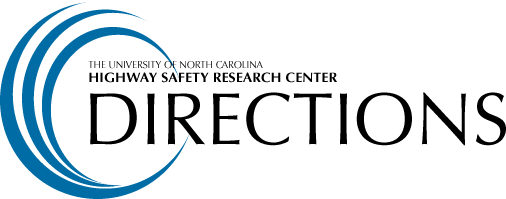

Deer-motor vehicle crash numbers continue steady growth in NC

Motor vehicle crashes involving deer peak during the fall months, and the problem of motor vehicle-deer crashes continues to grow in North Carolina. The UNC Highway Safety Research Center (HSRC) has recently released a data analysis of these types of crashes for 2006.
While general crash numbers are increasing, the data is showing a decrease in the number of fatal injuries occurring as a result of motor vehicle-deer crashes. In total, 17,236 deer-related crashes occurred in North Carolina, with 3 fatal injury crashes — down from 9 fatal crashes in 2005.
"We were pleased to see a decrease in the number of fatal crashes involving deer in 2006. But motor vehicle-deer crashes are growing in magnitude and tend to be an issue for motorists in North Carolina and many other states in the U.S.," said Eric Rodgman, senior database analyst for HSRC and lead analyst of 2006 deer crash reports. "As in any driving situation, we want to encourage motorists to drive with caution and alertness, especially at those times when deer crashes tend to occur with more frequency."
Deer-vehicle crashes tend to occur most frequently in the months of October, November, and December. These types of crashes are also more likely to occur between the hours of 5 am and 7 am and between 6 pm and midnight. Crashes involving deer comprised 8.5 percent of all reportable crashes in the state in 2006, up 1 percent from 2005.
In a county by county comparison of the data, Wake County topped the list again this year with 964 reported deer crashes. Following behind were Guilford County (602) and Rockingham County (496). The least number of reported crashes were evenly distributed among Swain, Jackson and Graham Counties, each reporting 3 crashes.
The analysis is derived from the narratives of the crash reports submitted by investigating law enforcement officers following deer-vehicle crashes reported to the North Carolina Division of Motor Vehicles in 2004. Therefore, these figures only reflect the total number of reported deer-related crashes. There is evidence that a great many more of these crashes occur than are reported to law enforcement agencies.
Download complete county-by-county crash data.
The UNC Highway Safety Research Center offers the following tips for lowering your risk of a crash with a deer.
- Reduce your speed in areas with a large deer population and where there are deer warning signs.
- Always wear your seat belt! It's your best protection from injuries in the event of a crash.
- Watch for eyes reflecting in your headlights. Try to look far down the road and scan the roadsides, especially when driving through field edges, heavily wooded areas, or posted deer crossing areas. At night, use your high-beam headlights to increase your sight distance. The sooner you see a deer on or approaching a road, the better your chances of avoiding a crash.
- While a crash involving a deer can happen at any time, be especially careful during the early morning and evening hours and during the months of October, November and December.
- Remember that deer travel in herds. If you see one deer cross the road in front of you, don't assume that all is clear. Deer herds can be fairly large, and the animals often move one right behind the other.
- Do not place confidence in "deer whistles" or other "ultra-sonic" devices that claim to prevent deer collisions.
- Maintain control of your vehicle. If a crash with a deer is inevitable, it is important that you not lose control of your vehicle or veer into the path of an oncoming vehicle to avoid contact with an animal. Loss of control usually results in a more
For more information on animal-vehicle crashes, please visit www.hsrc.unc.edu/safety_info/animal_vehicle/index.cfm.
The University of North Carolina Highway Safety Research Center
730 Martin Luther King Jr. Blvd, Suite 300 | Campus
Box 3430 | Chapel Hill, NC 27599-3430
Phone: 919.962.2203 | Fax: 919.962.8710
http://www.hsrc.unc.edu